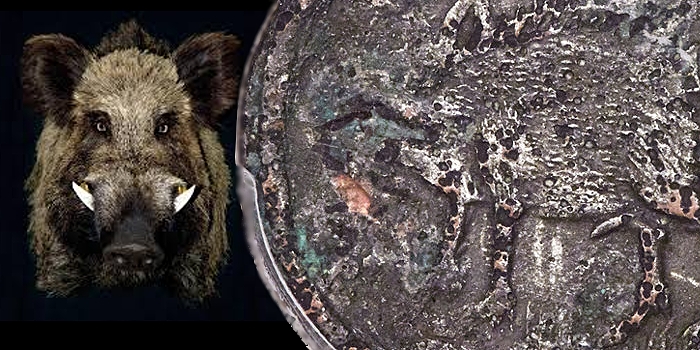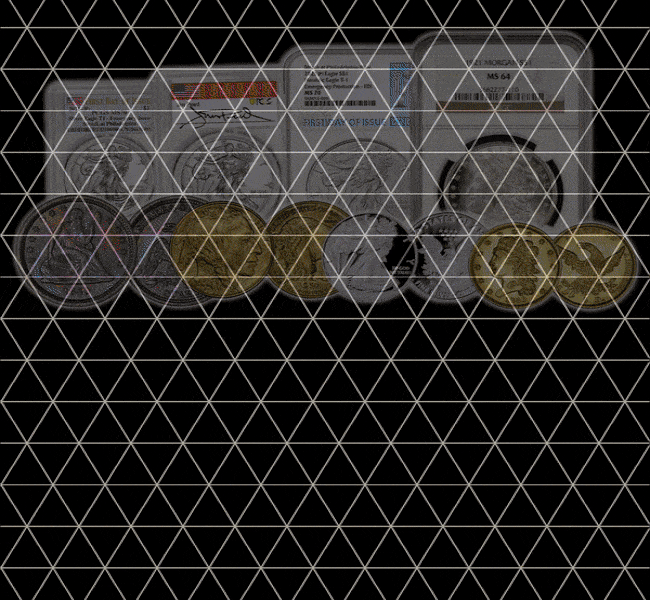
The Sommer Islands coinage was produced in England circa 1616 for use in the British colony now known as Bermuda. The coins were authorized under letters of patent for the Bermuda Company and were struck in four denominations (shilling, sixpence, threepence, and twopence). The threepence is the rarest of the denominations, with only eight examples known – including the recently discovered coin offered here.
Only four of the eight known examples are in private hands, with the other four in institutional collections.
The central device on the obverse of the Sommer Islands threepence is a hog facing left; the Roman numeral III, for threepence, is above, and a square arrangement of five pellets appears at the lower left. The reverse has a ship with S to the left of the bow and I to the right of the stern, abbreviating Sommer Islands. The coins were struck on brass planchets that were plated, or “washed”, with a light coat of silver. Until about 20 years ago, only a single variety was known. A second die pair was discovered in 1999 and offered in the March 1999 Bowers and Merena sale. The usual variety has small figures in the denomination, with their bases level. The new variety has larger figures in III that step upward from left to right. The present coin represents the first variety.
The Sommer Islands “Hogge Money” was mentioned by Captain John Smith (of Pocahontas fame) as early as 1624 in his General Historie of Virginia, New-England and the Summer Isles. The shillings were known to numismatic writers as early as 1762, when T. Snelling described one in his work A View of the Silver Coin and Coinage of England. Sylvester Sage Crosby was familiar with the shillings and the sixpence when he wrote his landmark treatise The Early Coins of America in 1875, but the lower denominations were only discovered later. According to Walter Breen, a specimen of the twopence washed up on a beach near Port Royal in 1877 and was reported as unique in the American Journal of Numismatics in October of 1887. The threepence was discovered in Bermuda by J. Kermack Ford, circa 1883. The discover was reported by Major General John Henry Lefroy, sometime Governor of Bermuda, in an article in the Numismatic Chronicle.
The Sommer Islands piece Heritage is offering in the September 4-8 Long Beach Signature Auction recently surfaced in Bermuda. Like all examples seen, the steel-brown/silver-gray surfaces show some light corrosion, but significant amounts of the silver plating remain intact. The Sommer Islands design elements are unusually well-detailed, with fine interior detail still evident on the hog’s fur. The reverse die alignment is about 225 degrees. Much interior detail in the sails and portholes remains intact, as well, accounting for the XF Details grade assigned to the coin by PCGS. This coin is actually one of the more attractive examples of this extremely rare issue.
With only four examples in private hands and two of those sold relatively recently and now in strong hands, it may be many years before a comparable example becomes available. The discerning collector will bid accordingly.




